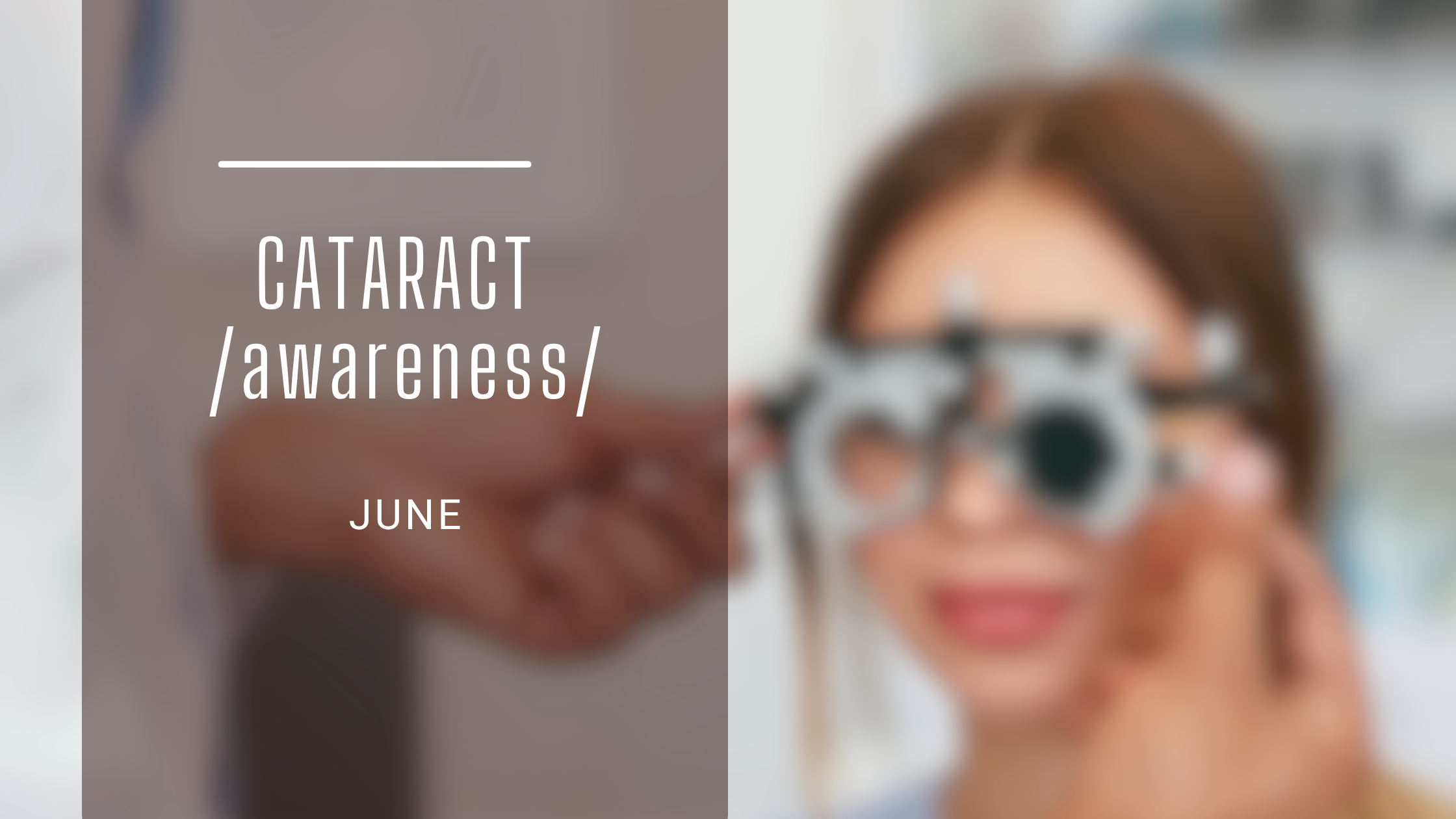June - Cataract Awareness Month

Cataracts are one of the leading causes of blindness and vision impairment in the United States. Cataract Awareness Month was established to raise awareness and educate the public about cataracts and the importance of eye exams.
What are cataracts? A cataract is a clouding of the eye’s natural lens. Cataracts occur when the proteins in the lens break down over time and form clumps that can affect your sight. Cataract symptoms can include hazy or cloudy vision, blurry vision, seeing normally bright colors as dull or faded, light sensitivity, difficulty seeing at night, double vision, seeing glare and halos around lights at night, and lights at night appearing extremely bright. Some people describe the condition as looking through a dusty window. There are multiple types of cataracts, and the main method of treatment for each type is cataract surgery.
Cataract risk factors: Most cataracts occur as part of the natural aging process. As you get older, your risk of developing cataract increases. Most Americans will have had cataracts and/or cataract surgery by age 80. But older age isn’t the only thing that can put you at risk. The following risk factors can also increase your likelihood of developing cataracts, diabetes, family history of cataracts, sun exposure, exposure to radiation via chemotherapy, smoking, steroid use, and eye trauma.
An ophthalmologist is a medical doctor (MD) who specializes in eye care and the treatment of eye disease and vision problems. In addition to providing medical care, ophthalmologists perform eye and vision surgery. Be sure to let your eye doctor know if you have any of these risk factors at your next appointment. It’s important for your doctor to understand your medical background so they can provide you with the best possible care. You should always inform your eye doctor of any changes in your vision, even if you think they may be insignificant. Sometimes, even the smallest shift can indicate a problem.
Since cataracts occur naturally as you age, there’s no sure way to prevent cataracts. But you can do certain things to lower your risk of developing them. You should schedule a comprehensive eye exam to ensure your eyes and vision are in good health, talk to your eye doctor about cataracts and ask if you might be at risk of developing the condition wear sunglasses with 100% UVA/UVB protection, and avoid or quit smoking.
Cataract treatment: Cataract surgery is a procedure to remove the clouded lens and replace it with an artificial one - intraocular lens (IOL). Factors influencing the choice of cataract surgery are age and general health severity and type of cataract, lifestyle and daily activities, visual needs and preferences, and expectations from the surgery. Patients have several cataract surgical options available, each with its advantages. Phacoemulsification is the most common procedure for treating cataracts right now. During phacoemulsification, the clouded lens is emulsified with an ultrasonic handpiece. Then it's removed from the eye. As a final step, the doctor inserts an intraocular lens into the eye. Laser-assisted cataract surgery uses a femtosecond laser to assist or replace several aspects of manual cataract surgery. It provides precision and potentially reduces recovery time.
In the Extracapsular cataract extraction (ECCE) method, the cloudy lens is removed in one piece, also the surgery requires a larger incision compared to phacoemulsification. The extraction of the cataractous lens is manual. This traditional method is no longer in practice, except in some severe cases of cataracts where other methods are not an option.
Small Incision Cataract Surgery (SICS) is an effective alternative to ECCE but with a smaller incision, allowing for quicker recovery and fewer complications. This procedure includes manual breaking up of the cataractous lens and suctioning out the pieces before implanting a new artificial lens in the eye. This cataract surgery is useful in settings with limited access to advanced technology. As well as treating dense cataracts. You’re typically awake for the surgery, but your eyes will be numb so it should be painless. You go home the same day with a special shield and sunglasses to protect your eye through the healing process. Vision will be blurry while your eye heals, though it should become clear within a few days or weeks. Patients should discuss these factors with their ophthalmologist to determine the most suitable surgical option for cataracts.
Sources:
https://www.cdc.gov/vision-health/about-eye-disorders/why-eye-exams-are-important.html https://www.nei.nih.gov/learn-about-eye-health/eye-conditions-and-diseases/cataracts/types-cataract
Eyecare America® is a public service program of the American Academy of Ophthalmology that provide uninsured and underinsured individuals 18 years and older with access to medical eye exams. It does this by matching patients with a volunteer ophthalmologist in their area. https://www.aao.org/eyecare-america/patients
American Society of Cataract and Refractive Surgery (ASCRS) provides access to free cataract care to underserved or uninsured patient populations, who meet or exceed the Operation Sight patient criteria. https://www.ascrs.org/foundation/operation-sight/operation-sight-faq
About the Author:
Roosevelt Noise, Jr. is a retired Air Force veteran, retired civil and private sector servant and serves as a member of the Health and Wellness Ministry, along with his wife Dora Noise, RN.
